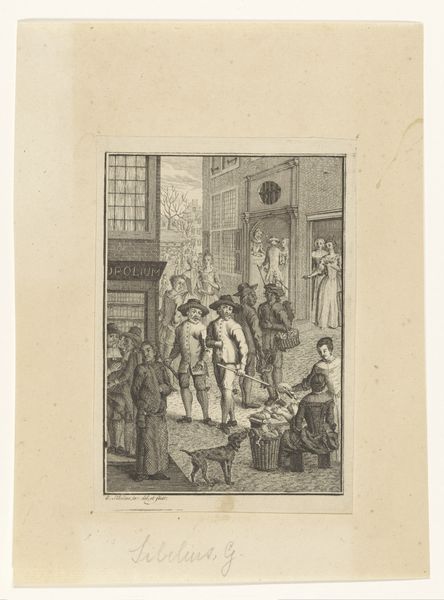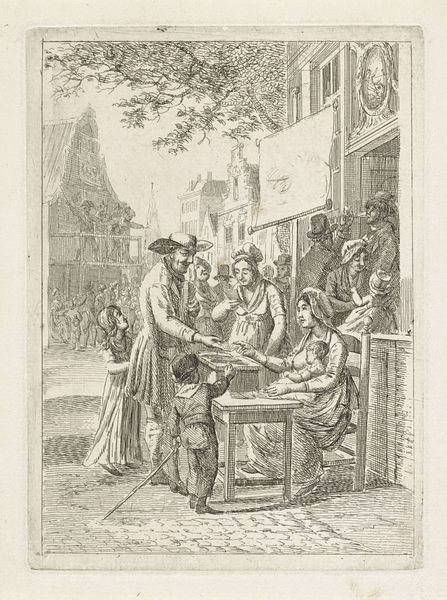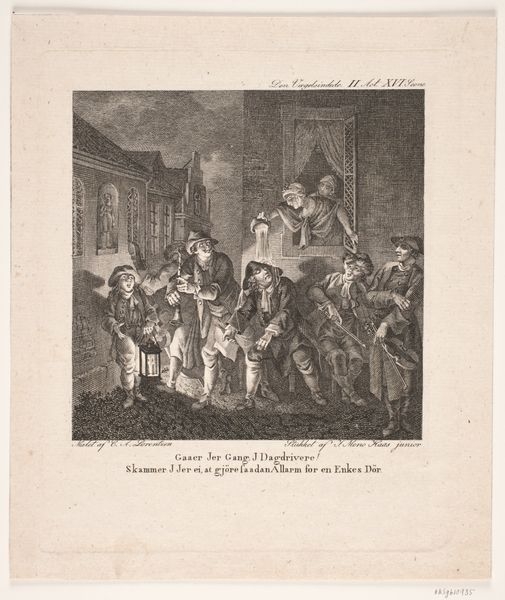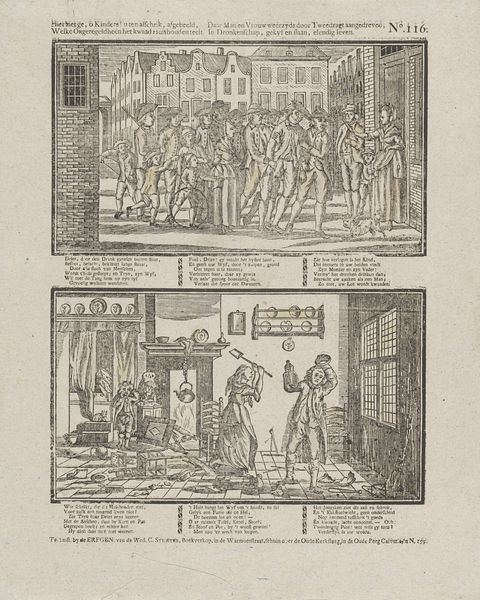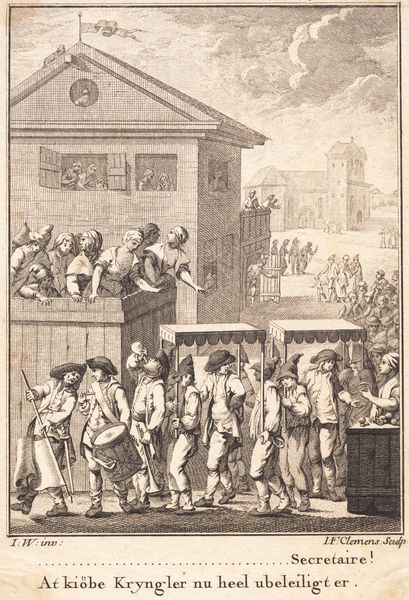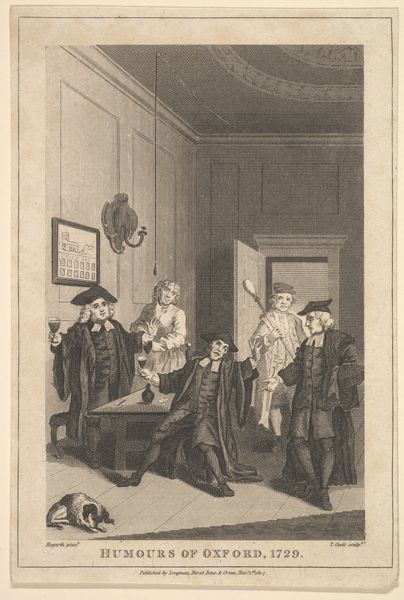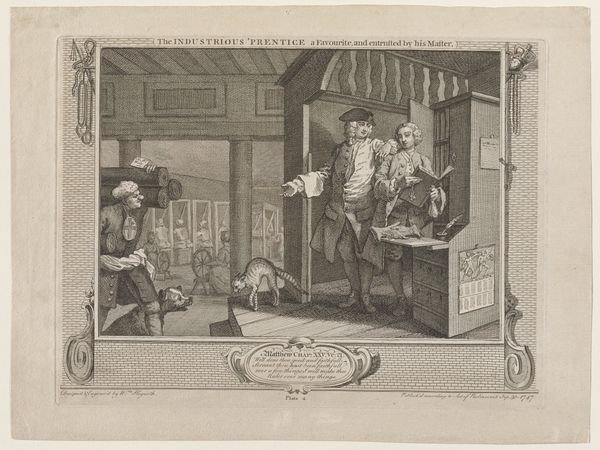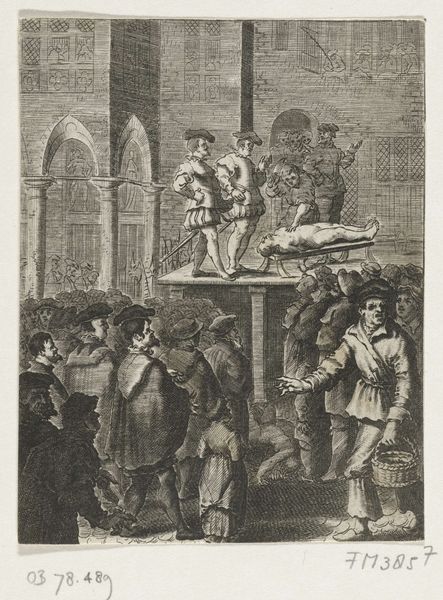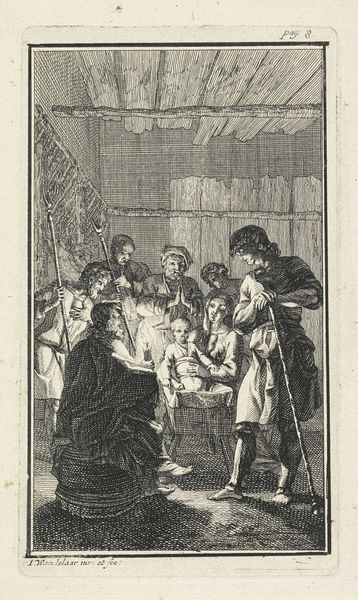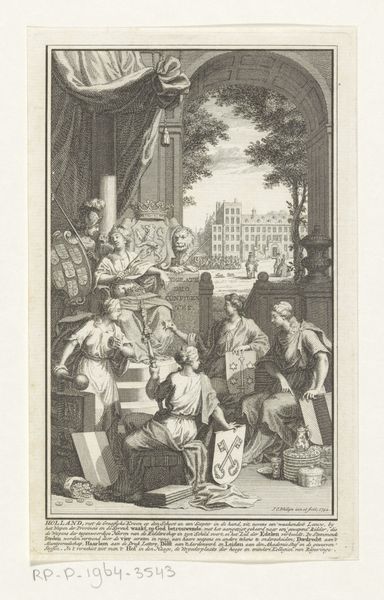
Hugo de Groot begeeft zich in metselaarskleding op de markt te Gorinchem, 1621 1768 - 1771
0:00
0:00
Dimensions: height 158 mm, width 109 mm
Copyright: Rijks Museum: Open Domain
Editor: This is a print from the late 1760s, entitled "Hugo de Groot begeeft zich in metselaarskleding op de markt te Gorinchem, 1621" by Gerard Sibelius, housed at the Rijksmuseum. It looks like an etching, almost documentary in style... all those people crammed in. What can you tell us about this image? Curator: It is fascinating how Sibelius chose to represent this specific moment, decades after the fact. Think about the power of symbols, especially clothing in this case. De Groot, a prominent figure, is disguised as a bricklayer to escape prison. Consider the symbolism of a learned man adopting the attire of a common laborer; the psychological impact of subverting expectations. It is not just about evading capture; it is about the very fabric of society being challenged. Do you see the market as a stage, of sorts? Editor: That is a rich reading! I guess I hadn’t considered clothing as a symbol of subversion, only a disguise. Seeing the market as a stage makes me wonder, what does it tell us about the artist's views or even the culture? Curator: Indeed, the culture! Look at the detail afforded to the marketplace— the people bartering, socializing. The city itself becomes a character, reinforcing shared identity and experience. Ask yourself what continuities he's drawing from the past? Are there familiar motifs or symbols at play? Editor: The building in the background on the left. Looks a little like a book store with "OPOLIUM" labelled over the entrance. Is it a clue to Grotius's knowledge, perhaps? Curator: A bookstore in plain sight is more than a detail. It’s a reinforcement of identity through knowledge. And Sibelius brings these things together, layering visual cues. Think about the choice to immortalize a moment of vulnerability through everyday activities: there's a potent cultural message. It gives ordinary people the lead role. Editor: So much symbolism! It is really cool how this one image ties together ideas about identity, culture, and the individual, defying the status quo. I'll definitely think differently about historical art now. Curator: Precisely. When we delve into symbolism, the artist's era speaks to us, echoing through history. It reshapes how we understand what the work means, beyond the literal scene.
Comments
No comments
Be the first to comment and join the conversation on the ultimate creative platform.
